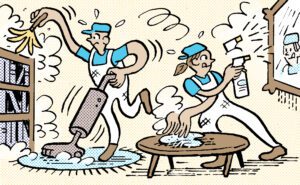 Just days before AOL reports its heavily scrutinized Q4 earnings, the company has rebranded the unit housing its Advertising.com flagship as AOL Networks. The purpose is to streamline AOL’s message to agencies, advertisers, marketers, publishers and investors and convey that the company is a programmatic player, not a vestigial ad network with a farrago of parts and services. Read the release.
Just days before AOL reports its heavily scrutinized Q4 earnings, the company has rebranded the unit housing its Advertising.com flagship as AOL Networks. The purpose is to streamline AOL’s message to agencies, advertisers, marketers, publishers and investors and convey that the company is a programmatic player, not a vestigial ad network with a farrago of parts and services. Read the release.
“As an evolving business, the Ad.com unit is both a managed service and a network,” said Ned Brody, who retains the title of CEO of AOL Networks. “And it is moving beyond display into mobile and is more of a programmatic platform. For example, this summer, we launched [demand side platform] AdLearn and that’s been doing well. We’re trying not to go the way of the industry and come up with yet another three-letter acronym that would only disguise all of the various things we actually do. We decided on highlighting a set of core brands that effect the breadth of the offering and the depth of what you can do as a publisher, advertiser or agency.”
Under the AOL Networks umbrella, the brands will continue to operate under their existing names. However, the mix of products and brands like the aforementioned AdLearn, or the retargeting property Buysight that AOL acquired at the end of 2012, will not get top billing. Instead, the two will merely be folded into Ad.com as product services.
“What we’re trying to say here is that our brands exist on three levels: there’s the overall group, which is now AOL Networks,” Brody said in an interview with AdExchanger. “Underneath those businesses are the product names.And you’ll likely see us de-emphasize some of those names over time. Instead, we will continue to put more dollars and attention toward the core brands. That said, brands like Buysight and the other product names aren’t going away. But over time, there will likely be some rationalization brought to the product line.”
Allie Kline, CMO of AOL Networks, added, “You’re going to see tighter packaging to make it easier for our constituencies to consume. When you have as many products and brands servicing everyone from publishers to agencies to advertisers, you need to streamline that message.”
Advertising.com will still get due attention as a “core brand” within AOL Networks. The flagship ad network that AOL acquired in 2004 with plans to turn itself from a fading, if somehow still lucrative, dial-up service. As that deal approaches its 10-year anniversary, the idea of an ad network is considered passé even to agency and marketing executives that still are uncertain about the meaning of programmatic and real-time bidding methods of ad buying.So the message AOL will be hammering home to those constituencies is that not only is Ad.com a programmatic tool for efficient buying of ad inventory on exchanges, but it’s also focused on delivering large amounts of brand awareness-level (aka “premium”) placements to a cross-screen network with 596 million global unique visitors. The premium part of the billing is Ad.com’s network-exclusive access to AOL’s owned and operated inventory, which includes The Huffington Post, Techcrunch, Engadget and the video platform known as AOL On Network, which also remains as a top brand within the rechristened Ad.com Group.
Separately, goviral, the branded content distributor that primarily runs across AOL’s roughly 20,000 publishers , will continue as well, along with the ad serving unit ADTECH, and Pictela, the developer of AOL’s large, interactive Project Devil ad units, which made the leap from the PC to mobile last fall.
AOL historians may look at this latest rebranding of the company’s parts as a return to the Platform-A structure that predated CEO Tim Armstrong’s era, which began in April 2009. AOL formed Platform-A to house Ad.com and the spate of acquisitions that it accumulated over the years, including ADTECH, and several brand names that have not survived: behavioral targeter Tacoda, affiliate marketing network buy.at (which was sold in 2010), video and audio ad server Lightningcast, contextual ad tool Quigo, and mobile ad net Third Screen Media.
Both Brody and Kline say that AOL Networks is not a return to that structure, which was disbanded — also in the name of streamlining — shortly after Armstrong’s arrival.
“If you look at Platform A, that really was an integrated sales model, rather than what this is: grouping all the technologies that serve advertisers and publishers directly,” Brody said. “They both involved name changes, but that’s where the similarity ends. The purpose of this is trying to make sure the market understands the breadth of programmatic and network offerings we have, rather than blur the lines between AOL’s premium, owned and operated publishing sites and relationships, and the network models, which is what Platform A tried to do.”










